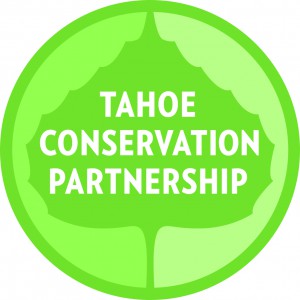Stewardship of the Conservancy’s 6,500 acres of mostly small lots requires year-round maintenance and inspection. Like any good neighbor, we protect these lands by restoring stream zones, removing hazard trees, thinning overgrown forests, building and repairing fences, and revegetating degraded areas. The Land Management Program works in conjunction with the Forest Improvement Program to manage nearly 4,700 parcels.
The Tahoe Resource Conservation District continues to be an invaluable partner in managing these lands. Our Joint Powers Agreement further strengthens a 20+ year relationship of restoration and land management.
Accomplishments to Date:
- Completed more than 90,700 property inspections
- Implemented more than 500 resource restoration projects
- Removed over 4,258 hazard trees
- Resolved over 500 encroachments
Property Inspection
Inspections include property boundary identification, forest health conditions, soil and water quality conditions, assessment of noxious weeds, trespass activity, and the condition of any improvements installed on the parcel by the Conservancy. Data collected during inspections helps to determine the effectiveness of completed project work and helps identify future management needs.
Restoration
Restoration projects are implemented on urban lots for a variety of reasons, including to improve wildlife habitat, restore forest health and enhance soil and vegetation for water quality. Typical projects on urban lots include the obliteration of unauthorized roads, erosion control, soil stabilization, re-vegetation and reforestation of disturbed or barren areas, and barrier construction to prevent unauthorized uses.
Hazard Tree Abatement
Hazard trees are generally identified through routine property inspections or staff is notified by the public. If you have any concerns about a tree on Conservancy lands, contact us. Please provide your name, phone number, address, and a detailed location of the tree in question. We encourage you to review our Forest Improvement Program for more information.
Forest Health and Fuels Reduction
Forest health and fuels reduction projects preserve water quality, enhance wildlife habitat, and provide public safety and property protection.
Projects include removal of dead and dying trees, thinning of overstocked forest stands, protection of tree species of limited local occurrence to enhance species diversity, re-introduction of fire into the ecosystem through prescribed burning, reforestation, site restoration, and enhancement of riparian habitats, including reduction of conifer encroachment into meadows and quaking aspen stands.
If you have any concerns about a tree on Conservancy lands, contact us. Please provide your name, phone number, address, and a detailed location of the tree in question. We encourage you to review our Forest Improvement Program for more information.
Fact Sheet: Managing Forest Health and Wildfire Risk on Conservancy Lands (PDF)
Encroachment Resolution
Conservancy lands are public lands and cannot be used privately. Unauthorized use of urban lots, however, is a common problem wherever they adjoin developed private lands.
Noxious Weed Prevention and Control
Noxious weeds are non-native, invasive plants that tend to outcompete native vegetation. They are a threat to native biodiversity and community ecology. Weed populations are removed, oftentimes via chemical treatments, and monitored to ensure the population does not re-establish. In addition to eradication and monitoring, the Conservancy also takes measures to prevent the spread of noxious weeds, including the use of weed-free materials for restoration projects and requiring crews and equipment to be weed-free before beginning a project.


